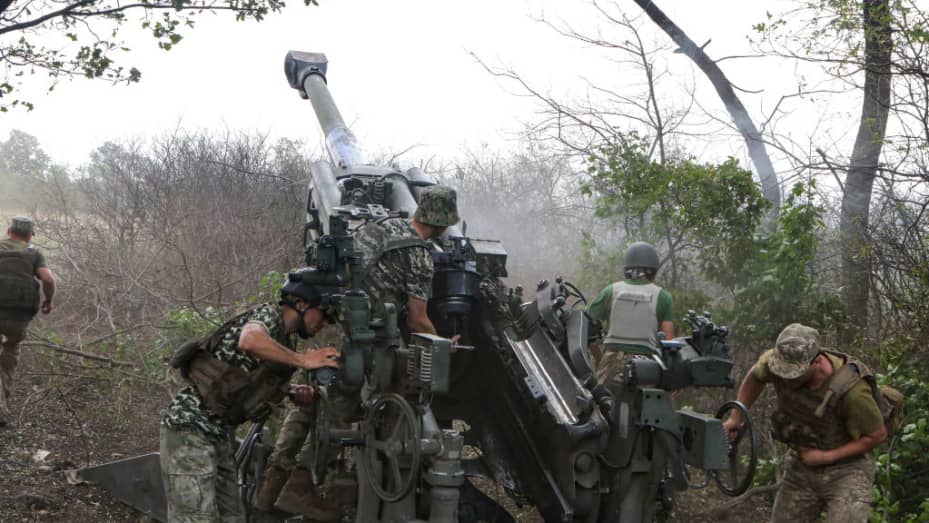
In the U.S. weapons industry, the normal production level for artillery rounds for the 155 millimeter howitzer — a long-range heavy artillery weapon currently used on the battlefields of Ukraine — is about 30,000 rounds per year in peacetime.
The Ukrainian soldiers fighting invading Russian forces go through that amount in roughly two weeks.
That’s according to Dave Des Roches, an associate professor and senior military fellow at the U.S. National Defense University. And he’s worried.
“I’m greatly concerned. Unless we have new production, which takes months to ramp up, we’re not going to have the ability to supply the Ukrainians,” Des Roches told CNBC.
Europe is running low, too. “The military stocks of most [European NATO] member states have been, I wouldn’t say exhausted, but depleted in a high proportion, because we have been providing a lot of capacity to the Ukrainians,” Josep Borrell, the EU’s high representative for foreign affairs and security policy, said earlier this month.
NATO Secretary-General Jens Stoltenberg held a special meeting of the alliance’s arms directors on Tuesday to discuss ways to refill member nations’ weapons stockpiles.
Military analysts point to a root issue: Western nations have been producing arms at much smaller volumes during peacetime, with governments opting to slim down very expensive manufacturing and only producing weapons as needed. Some of the weapons that are running low are no longer being produced, and highly skilled labor and experience are required for their production — things that have been in short supply across the U.S. manufacturing sector for years.
Indeed, Stoltenberg said during last week’s U.N. General Assembly that NATO members need to reinvest in their industrial bases in the arms sector.
“We are now working with industry to increase production of weapons and ammunition,” Stoltenberg told The New York Times, adding that countries needed to encourage arms makers to expand their capacity longer term by putting in more weapons orders.
But ramping up defense production is no quick or easy feat.
Is the U.S. ability to defend itself at risk?
The short answer: no.
The U.S. has been by far the largest supplier of military aid to Ukraine in its war with Russia, providing $15.2 billion in weapons packages to date since Moscow invaded its neighbor in late February. Several of the American-made weapons have been game changers for the Ukrainians; particularly the 155 mm howitzers and long-range heavy artillery like the Lockheed Martin-made HIMARS (High Mobility Artillery Rocket System). And the Biden administration has said it will support its ally Ukraine for “as long as it takes” to defeat Russia.
That means a whole lot more weapons.
The U.S. has essentially run out of the 155 mm howitzers to give to Ukraine; to send any more, it would have to dip into its own stocks reserved for U.S. military units that use them for training and readiness. But that’s a no-go for the Pentagon, military analysts say, meaning the supplies reserved for U.S. operations are highly unlikely to be affected.





No comments:
Post a Comment